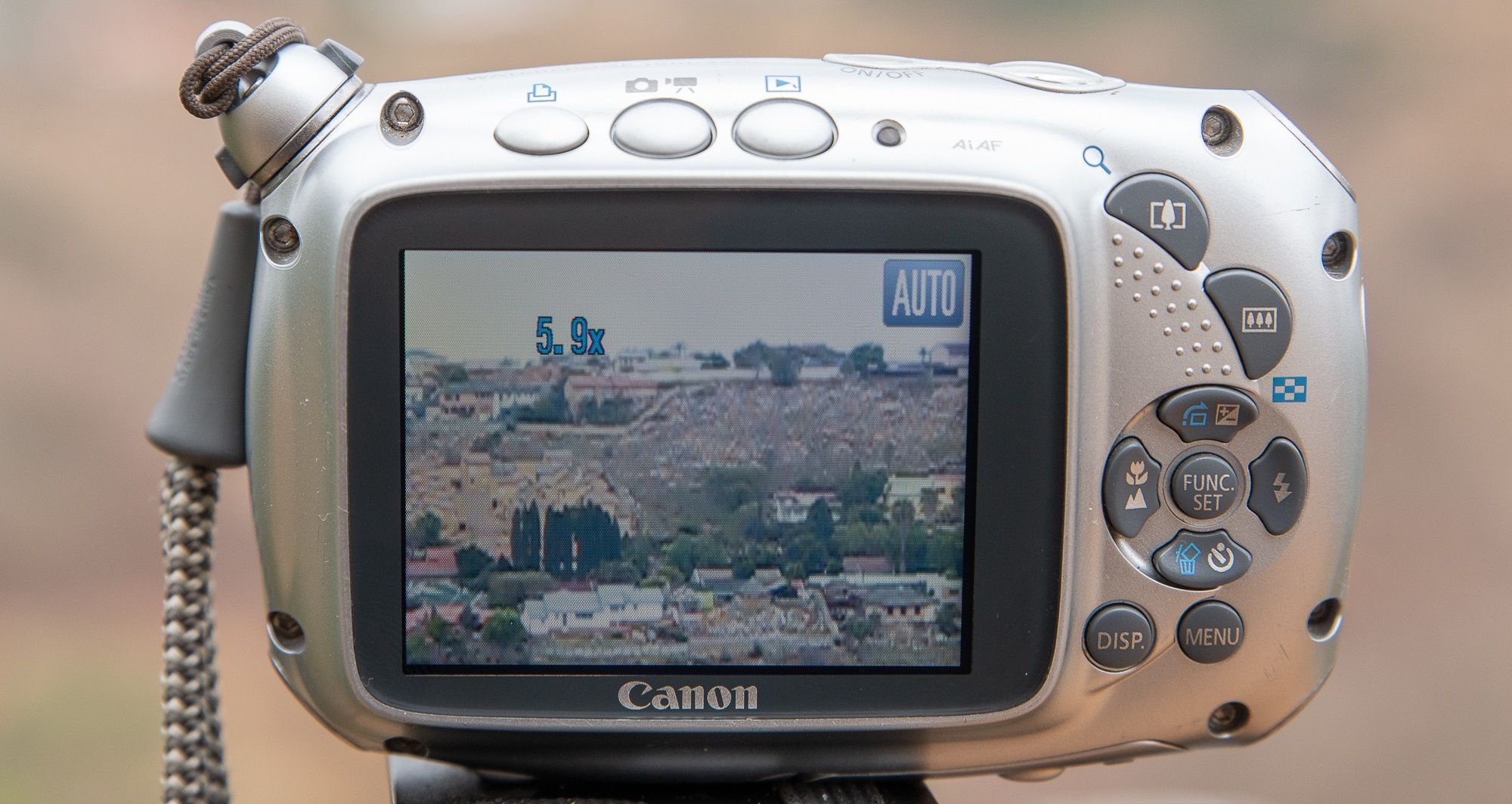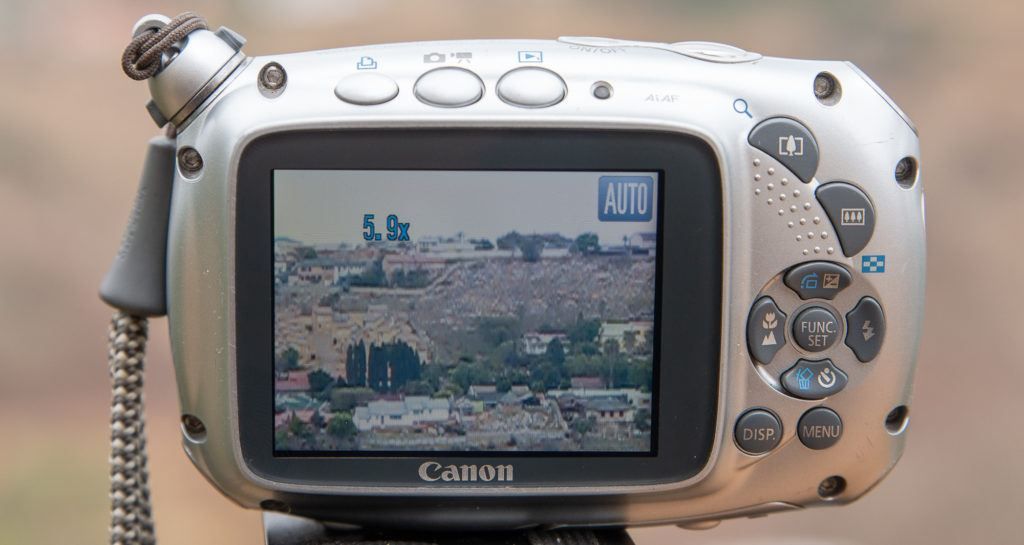Introduction
I was fortunate to have been around at the birth of the digital camera. I’m referring to point-and-shoots or bridge cameras, as it’s known in the educated world. My pride and joy were a Canon SX20 IS with a massive 20x optical zoom and an ‘impressive’ 4x digital zoom!
My excitement about the digital zoom (which effectively took the 20x optical zoom to a total of 80x zoom) quickly resulted in a mixture of pleasant surprises and total disappointments.
Why? That is what we will discuss in this guide.
What you will learn in this article:
In this article, we will discuss what digital zoom is, its uses, and the effects it has on your images. We will see when it makes sense to use it and when it is safer to stay away from it.
Recommended Reading: If you’d like to master camera settings to create gorgeous, creamy, blurry backgrounds, grab a copy of Photzy’s premium guide: Beautiful Background Blur.
What Is Digital Zoom?
To answer the question properly, let’s start by looking at what optical zoom is.
Optical Zoom
Optical zoom is achieved by photographing a scene or subject through a zoom lens. This lens may be built-in (as in bridge cameras) or interchangeable (as in DSLRs). In other words, optical zoom is achieved by bringing a scene closer through the specially designed glass, very similar to binoculars or a telescope.
Digital Zoom
Digital zoom is done by the camera’s built-in image processing software. It enlarges the digital image synthetically at the center and then trims away the parts that will not fit onto the designated image area after enlargement. It’s very similar to what you may be doing as you crop your image in post-processing.
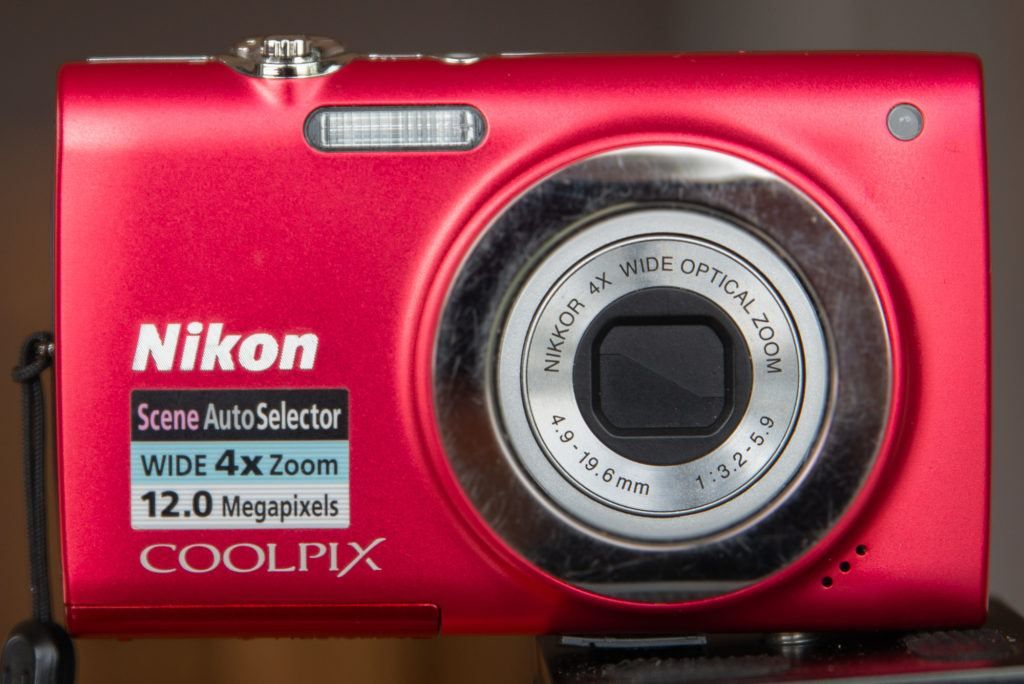
Photograph by Tobie Schalkwyk
Why Should You Use Digital Zoom With Care?
Reason #1: The Concept Is Problematic
Digital zoom does not ‘look’ at a ‘raw’ scene through the glass. It enlarges the pixels of a digital image. When you keep on enlarging an image in post-processing, you will eventually start seeing little squares representing pixel blocks. The effect is all but beautiful, to put it mildly.
The same is true for digital zoom. When you keep on having a closer look at pixels, you will see more blur and noise (snowy detail). You will perhaps not see little squares (no digital zoom will enlarge the image that much), but your image will certainly lose some of its clarity or quality.
Reason #2: Physical Difficulties
The more you zoom in, the more the image in your viewfinder ‘dances around’ on your camera’s LCD screen. Of course, you can increase the shutter speed if your camera allows you to do so, but you will have to also adjust the aperture and ISO to get the correct exposure.
The more you zoom in, the more the image in your viewfinder ‘dances around’ on your camera’s LCD screen.
Unfortunately, most bridge cameras only provide for the adjusting of exposure via the camera’s menu system and this is no fun at all, and perhaps may result in lost opportunities as you work your way through these settings. Add to that the fact that the small sensors of bridge cameras usually do not favor high ISOs (generating a lot of ‘noise’ as you raise ISOs) so rather stay away from ISO adjustments.
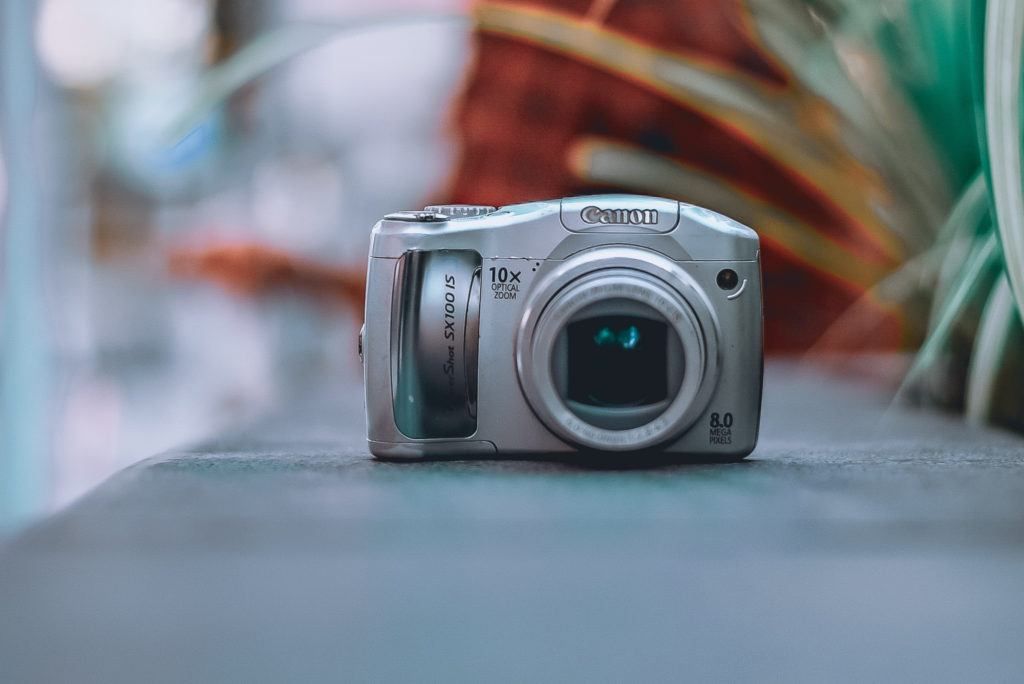
So why have digital zoom?
To be honest, when I started writing this guide, the plan was to tell you to leave digital zoom alone. As I started collecting evidence to support that viewpoint, though, I realized that there may be cases where its use is justified, especially with older bridge cameras that did not have high optical zoom specifications. This will become clearer as we look at a few illustrations below.
A few illustrations:
Let’s look at a few illustrations using photographs of one of my bird albums’ cover pages.
Camera specs:
- Canon Powershot D10
- Maximum image size (4,000 x 3,000 pixels / 12 MP)
- The highest quality (Fine)
- All settings on Auto
Illustration #1: Results for Optical Zoom Only (Close Subject)
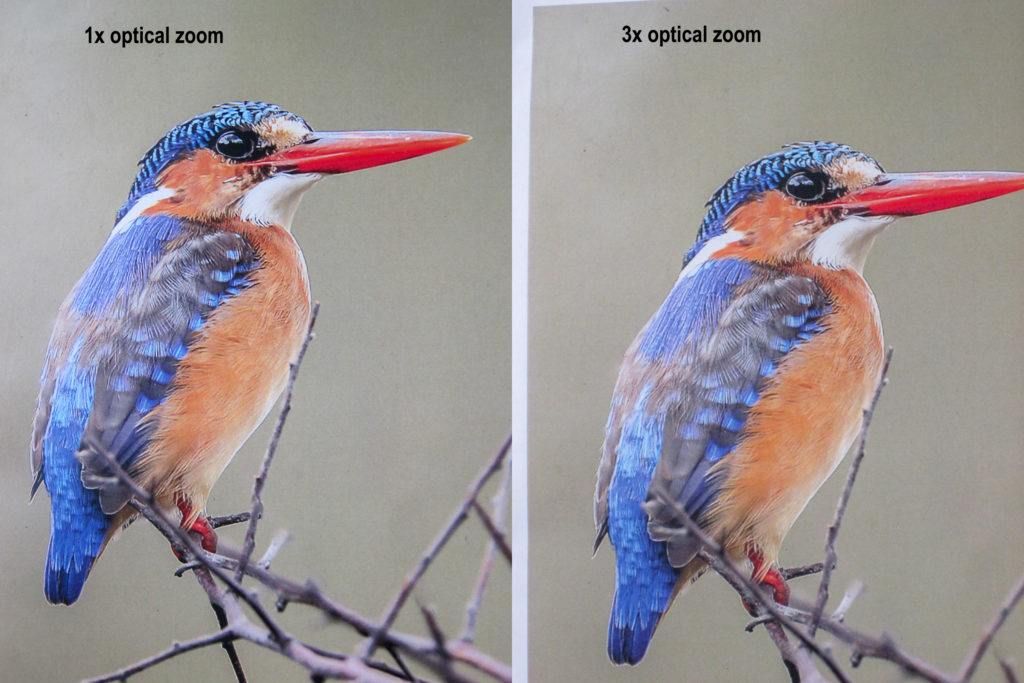
Photograph by Tobie Schalkwyk
It is quite clear in these images that there is hardly any difference in quality. The slight difference is probably more because of hand shake on my side at 3x optical zoom.
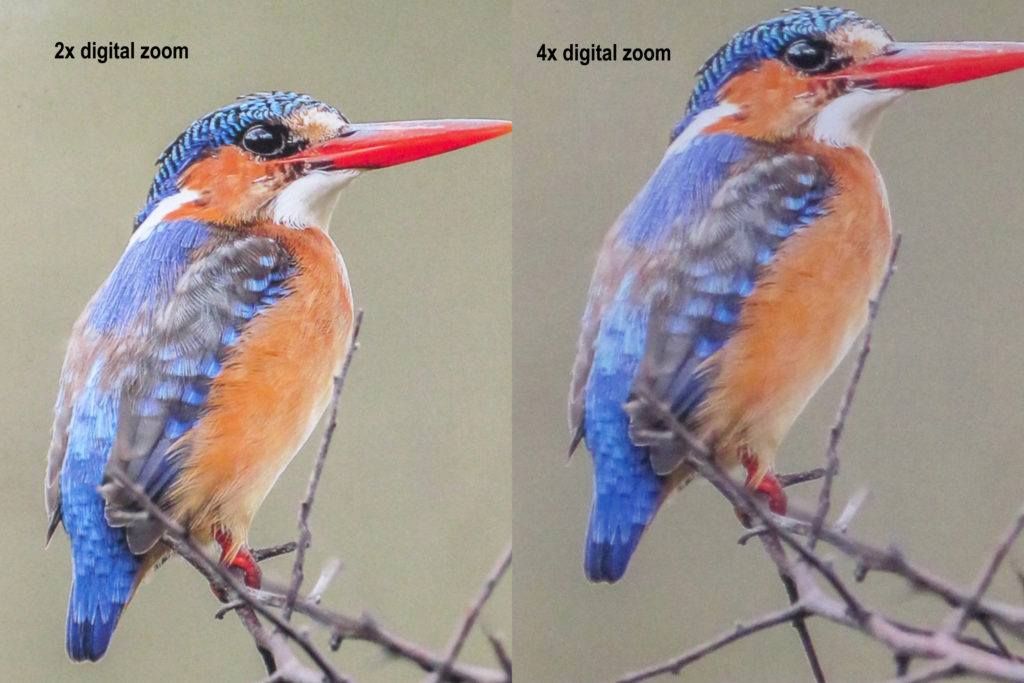
Photograph by Tobie Schalkwyk
Digital zoom:
The degradation in image quality in the image above is immediately detectable at 2x digital zoom and very obvious at 4x digital zoom.
Illustration #2: Cropping an Optically Zoomed Subject vs. a Digitally Zoomed (Far Away) Subject
This is the test that convinced me that there’s a case for digital zoom.
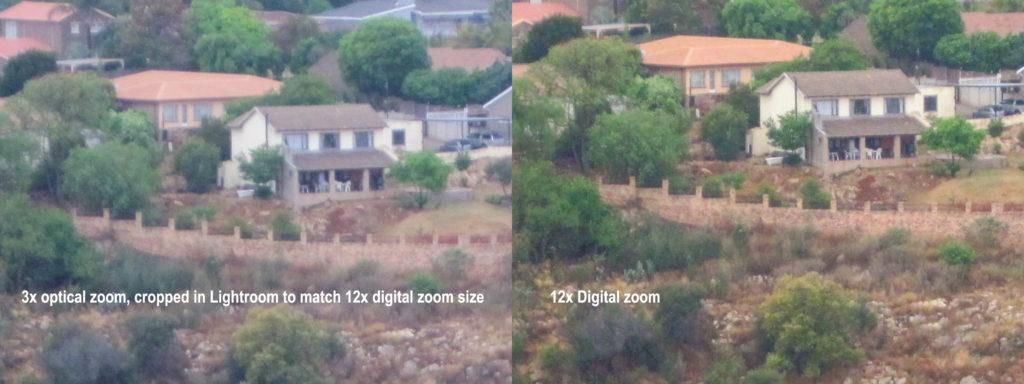
Photograph by Tobie Schalkwyk
On the left side, I cropped the best of three 3x optically zoomed images to cover more or less the same area as the 12x digitally zoomed version on the right. The color rendition of the digitally zoomed image is way better (less post-processing required) and it appears to be a little sharper than the cropped version on the left.
Key Lesson: From the above illustrations we can conclude the following:
- If you can get close enough to your subject to do your final composition in-camera and without using digital zoom (hardly any cropping needed in post-processing, if any at all), then do so.
- If your subject is too far away to eliminate the need for a closer crop in post-processing, then use your digital zoom but do so sparingly. The images in Illustration #2 are good enough to prove that you have been to a particular event, but it certainly is not excellent quality.

Photograph by Tobie Schalkwyk
Recommended Reading: If you’d like to master camera settings to create gorgeous, creamy, blurry backgrounds, grab a copy of Photzy’s premium guide: Beautiful Background Blur.
Conclusion
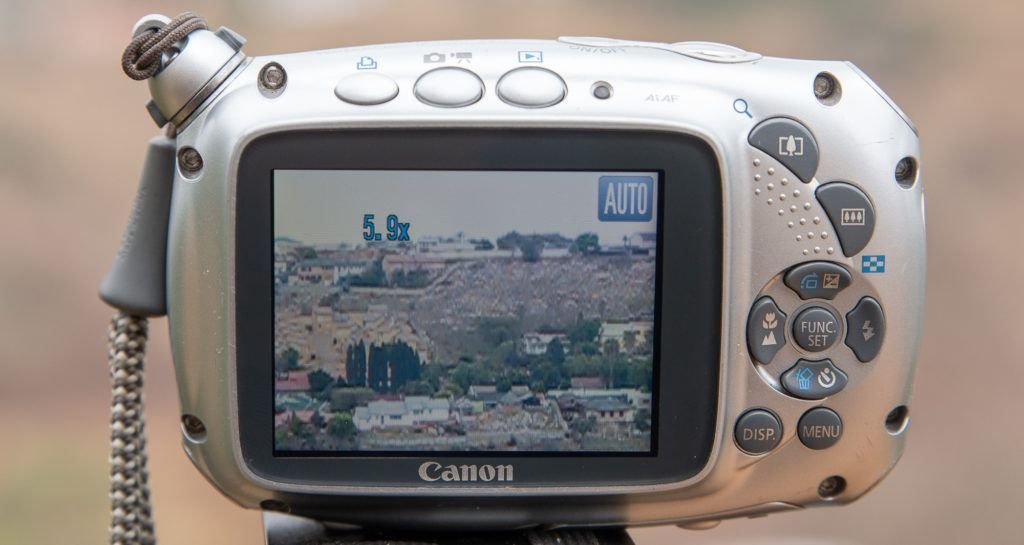
Photograph by Tobie Schalkwyk
Digital zoom has survived through the years, so there has to be a case for using it. The bottom line: use it as a last resort because in that case you probably have nothing to lose. But only use it after you have come as close as humanly possible to your subject and when the optical zoom is not enough.
Keep in mind that digital zoom on all cameras may not be equal. The more pixels your camera has, the better it will crop in post-processing – and vice versa. Play around with digital zoom on your specific camera and establish up to what stage – and in which situations – it makes sense to use it.
Digital zoom has survived through the years, so there has to be a case for using it.
Important notes:
- The examples above were specifically done with a 3x optical zoom camera from years ago (2009) to illustrate a point. However, today’s bridge cameras are way superior to that, with the Canon Powershot SX70 HS’ 65x optical zoom a case in point. If you ever need this camera’s 4x digital zoom, then you are most likely doing something wrong!
- The reciprocal rule of photography (to eliminate blur caused by camera shake) is well known in the world of DSLR cameras and lesser-known in the world of bridge cameras. Study it and see if you can enforce it when using your camera’s zoom features.
- When going beyond (I’d say) 6x optical zoom, you may want to mount your camera on a monopod or tripod (or use other ways to stabilize your camera) despite built-in optical stabilization.
Most importantly, happy shooting!

Photograph by Tobie Schalkwyk
Self-Check Quiz:
- What is the main difference between digital and optical zoom?
- How will you know that you’ve pushed digital zoom too far?
- What is one of the physical difficulties created by digital zoom (in fact also optical zoom) and how can you overcome it?
- Provide two methods of avoiding the use of digital zoom.
Assignment:
If you have a digital (bridge) camera, perform the following tasks and answer the following questions to explore its limitations:
- You may be aware of your camera’s optical zoom range, but what is its digital zoom range?
- Why do you think its digital zoom range is so low (usually up to 4x)?
- How does your camera indicate the stage when it switches to digital zoom? This is important as you may want to avoid that.
- Take a few shots at your camera’s maximum digital zoom range. What are your observations in terms of keeping the camera stable? How about image quality?
- Up to which digital zoom range do your images look respectable if any at all?
- Considering your camera’s optical zoom range, will you ever use digital zoom?


